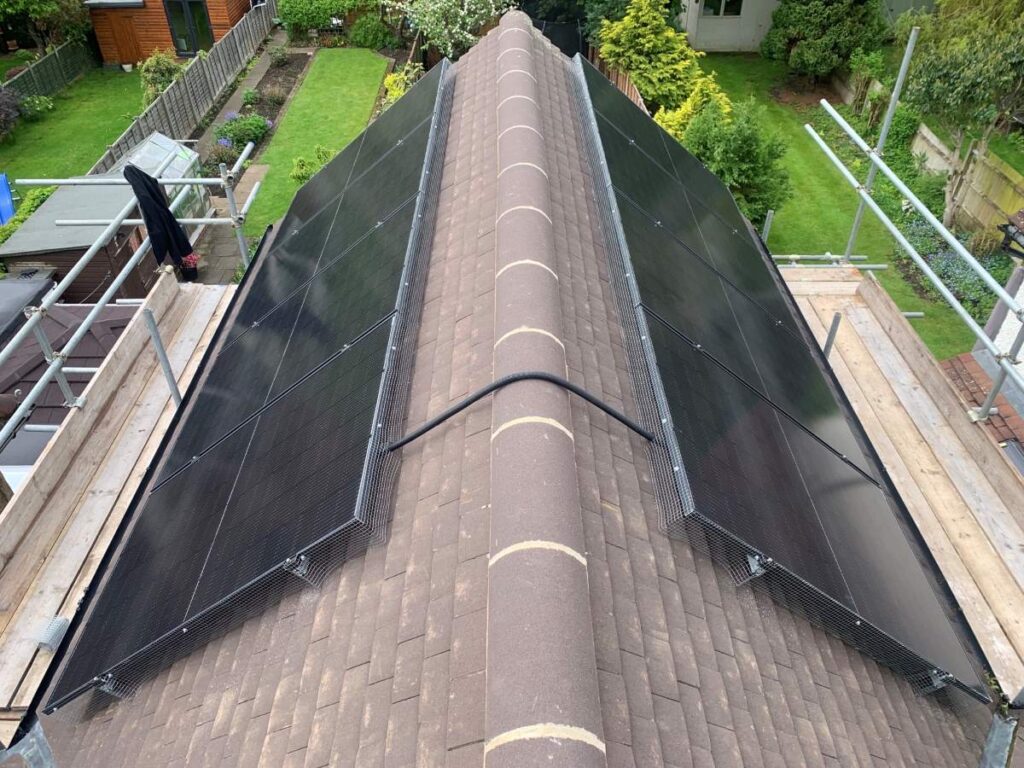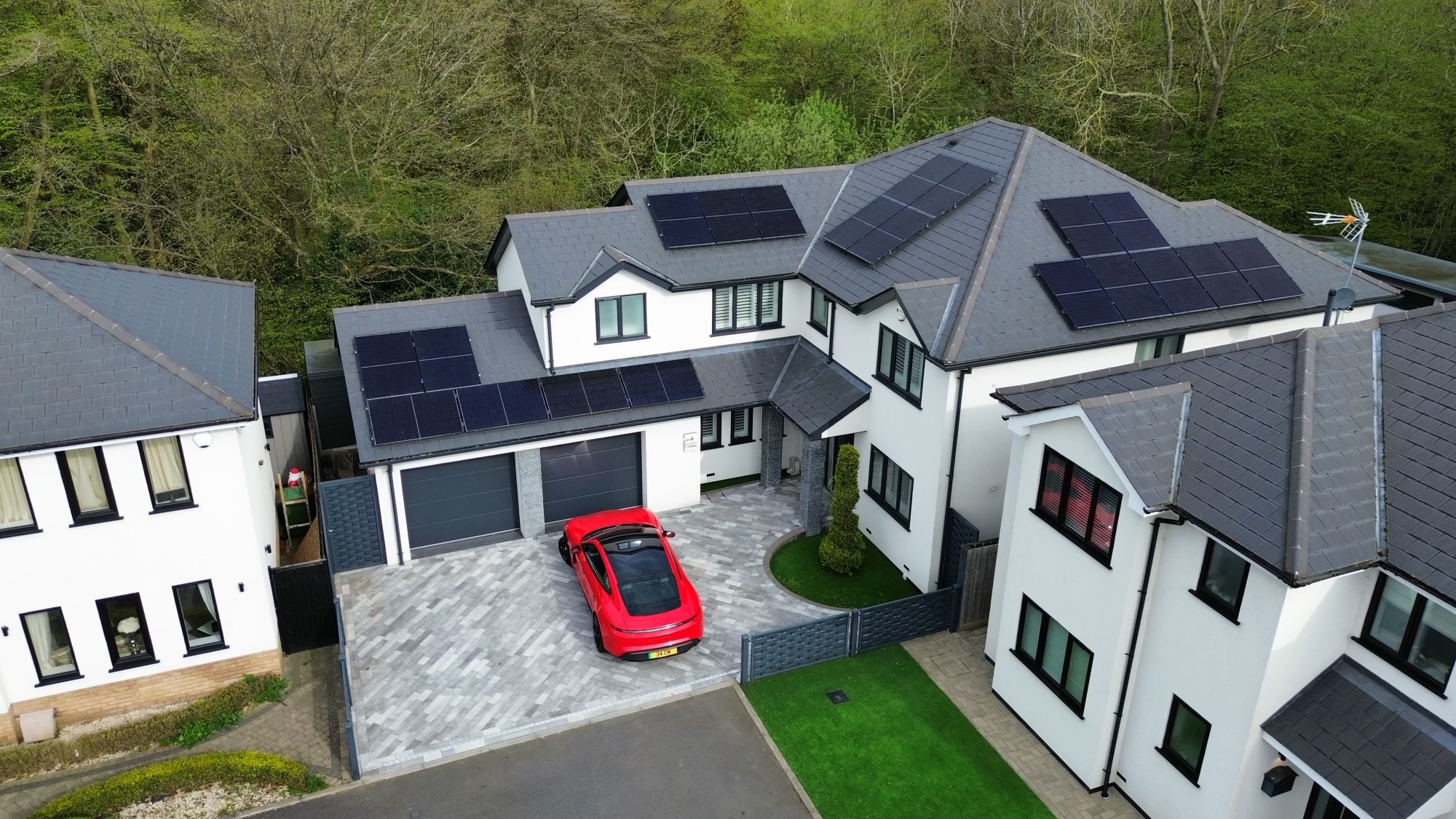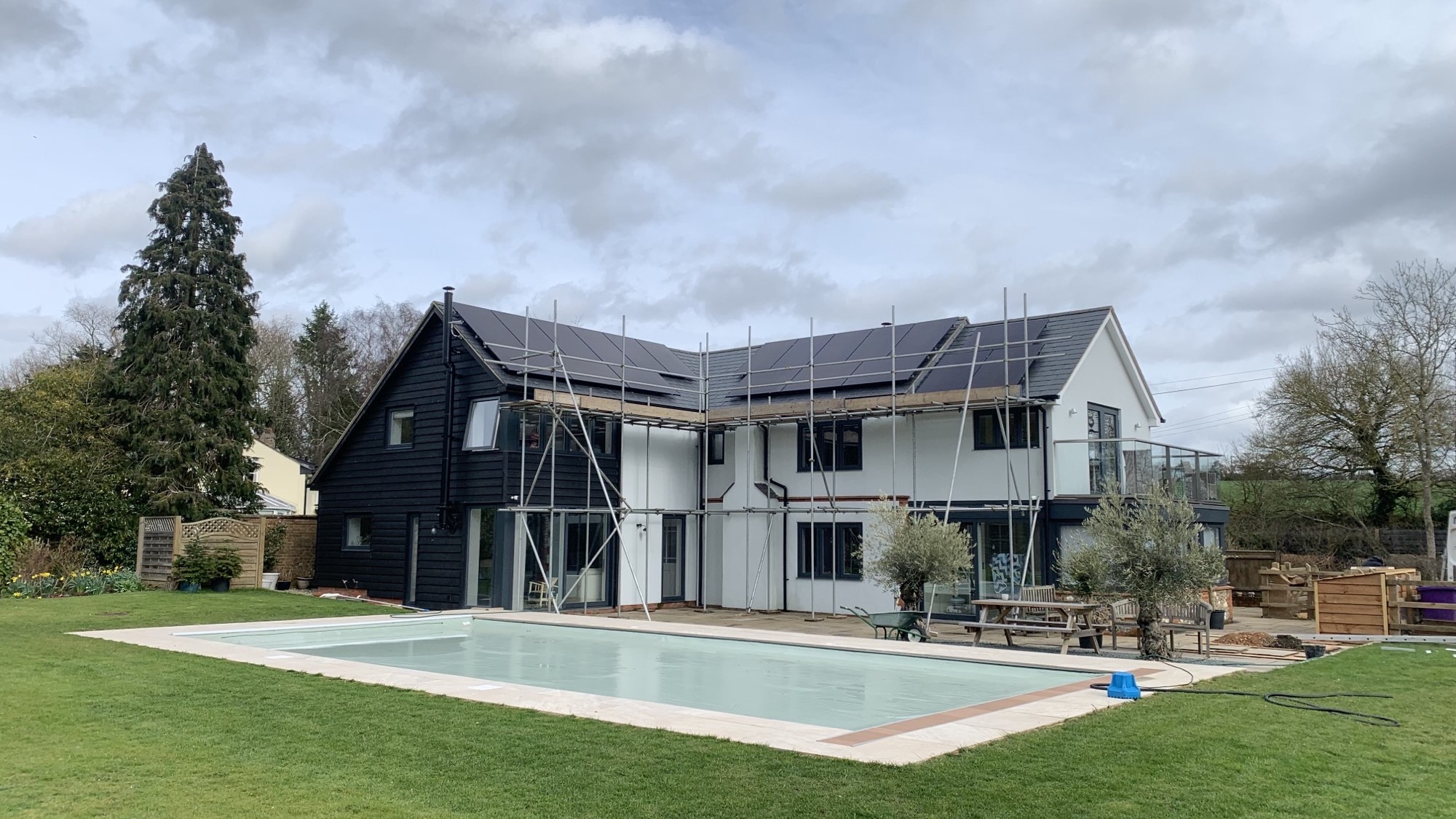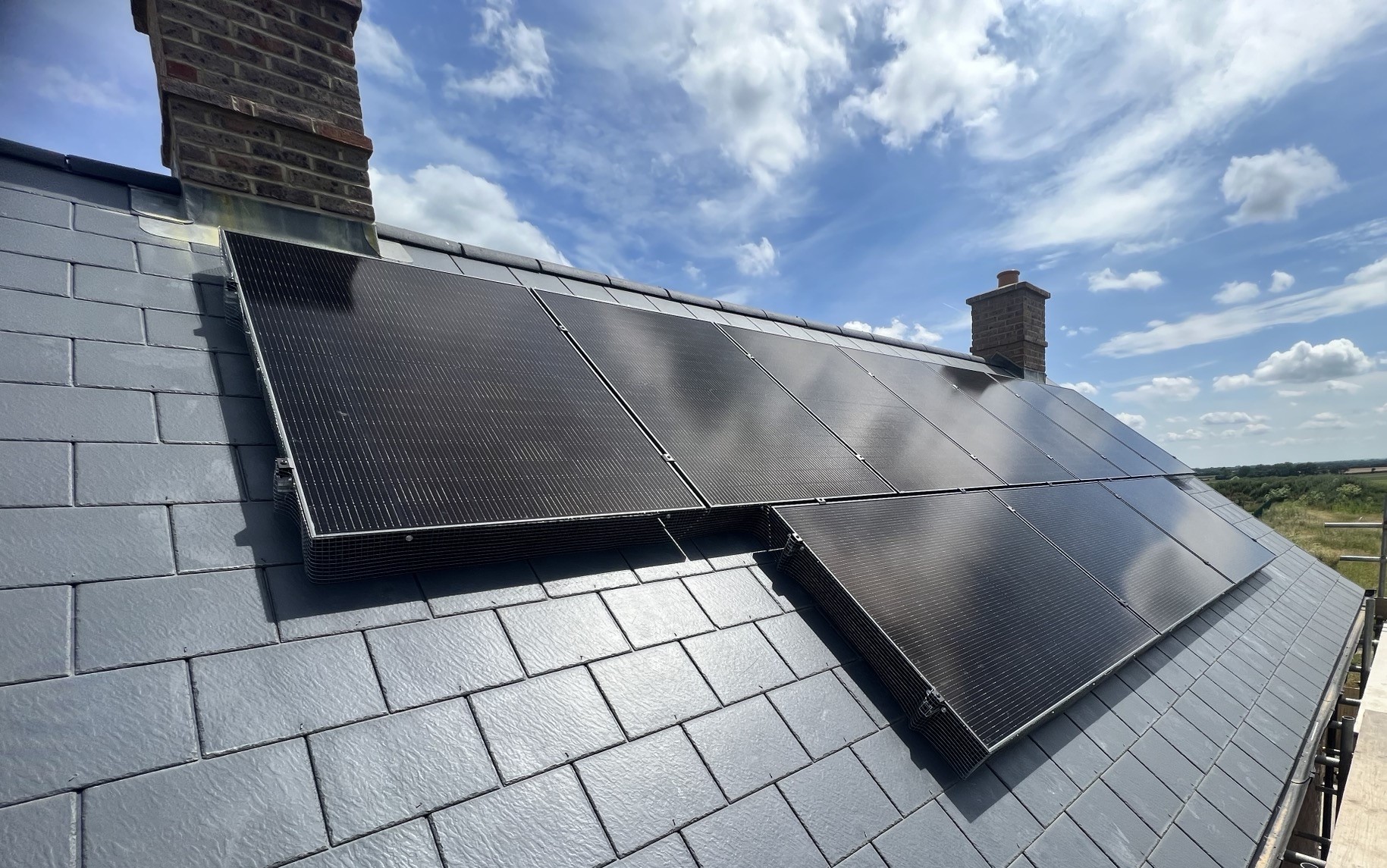“Solar power? Hang on, we don’t live in California!” True, but it’s all about daylight, not sunshine. Panels can still generate some electricity on gloomy days, vital when the weather’s as dull as watching paint dry.
Before you stick them on your home, understand these key need-to-knows:
There are two types of Solar Panel
The type we’re talking about is photovoltaic solar panels – also known as solar PV – which catch the sun’s energy and convert it into electricity that can be used to power household goods and lighting. The other type is solar thermal, which allows you to heat water and can cut down heating bills.
This guide shines a light on solar PV, as that’s where you can earn money through generating your own electricity through the ‘feed-in tariff’, as well as save on your electricity bills. According to the Department for Business, Energy & Industrial Strategy (formerly the DECC), over half a million British homes have panels installed.
You need a south-facing roof
To maximise what your panels can make, you usually need a predominantly south-facing roof. If your roof faces east or west you’ll still get some benefit, but it may be less effective and you might not get the maximum savings. That being said, some rooftops will be able to accommodate an east-west split of solar panels, like the image below.

Shading
While some early or late shading from other buildings or trees is okay, your roof should be mostly unshaded between 10am and 4pm.
The further south you live, the more you can save
While you don’t need a summer home in Hawaii to get some juice from solar panels, the further south you are can make a difference when it comes to their effectiveness. Remember, this is about daylight, not hours of sunshine. Northern homes get slightly less, so where you live needs to be factored in.
Panels could push your house’s value up or down
Some people worry that ugly panels plastered all over their roof could push the price of their house down. However, equally, a more efficient home generating its own energy may be more attractive to buyers.
Solar panels are a fairly hefty investment and might not be suited to those planning to move in the next few years – certainly you shouldn’t expect a big upfront investment to be immediately reflected by a jump in your home’s value.
Be wary that being tied in to a contract that remains with the property once you’ve left could be unattractive to buyers, whereas a buyer’s ability to benefit from the feed-in tariff once they move in might make your house more appealing.
Think about how visible the panels are and ask local estate agents for their experiences before installation. When we asked the National Association of Estate Agents for an overview, it told us:
Solar panels can indeed affect the value of a property, in both a positive and negative way. If the panels are new technology, show significant savings and are aesthetically acceptable, they may very well boost value. However, in some instances, the agreement which ties respective owners into old technology is onerous and could well affect the value of a property in a negative way.
National Association of Estate Agents
You shouldn’t need planning permission
You don’t generally need planning permission for solar PV systems. The big exceptions are if your property has a flat roof, is listed or in a conservation area. You might need to get approval from your council’s building control team, so check with your local authority.
In England and Wales, the Government’s Planning Portal says that panels are likely to be considered as “permitted development”.
Solar panels are generally low-maintenance
The Energy Saving Trust says little maintenance is required on a properly installed, well-designed solar PV system, though you’ll likely need to replace the inverter – a gadget which is a key part of the mechanism – within about 20 years (approximately £600, although this can vary by manufacturer and model).
Of course, though, things can go wrong. Check the installer warranty you get covers the 20 years you’ll be getting the feed-in tariff. If the panels are damaged by something unexpected, like a storm, you may also be covered by buildings insurance – check with your insurer before you have them installed and bear in mind you may need to increase the sum insured.
Use your solar panels at the right time and you’ll max their value
Once you’ve got your panels installed and they’re up and running, make sure you make the most of them by using them at the right time.
For example, in the winter, when there’s less sunlight and you’ll generate less solar power, you’ll take more energy from the grid. It’s a good idea to set appliances to run while it’s light outside, staggering them to max the savings.
For tons more top tips from solar nerds, check our other knowledge base articles.
Does buying solar panels add up? Can you recoup the outlay?
Whether they add up for you is all about how much you’re paid back later down the line to cover your initial spend via electricity savings or government payments for you generating electricity.
How much do they cost?
This is the key point to start with. The price of a typical solar panel system, including installation, is now around £6,000-£9,000. In the scheme’s early days, a system this size used to cost £10,000-£12,000.
How much can you make back?
- Electricity savings. First and foremost, you can use the electricity your panels generate, thus reducing your electricity bills. Savings depend on the system size, electricity use, whether you’re at home during the day to use the energy you’re producing and other factors. If you can use more energy during the day when the panels are generating, you’ll save even more as you’ll need less electricity from the grid.
- The export tariff. This is a payment for energy you don’t use which is sent back to the grid. Different energy companies provide different rates for exported electricity, so these can vary. Octopus also offer a tariff exclusively for customers with Solar Panels called Octopus Flux. This utilises different import & export rates for certain periods of the day.
- Battery Savings. If you have solar panels with battery storage fitted, the savings can really begin to add up. The battery will store energy generated by the solar panels for use at a later time. For example, if the home is empty during the day while the panels are at peak power, the battery can store this energy until the evening when energy consumption is usually at it’s highest.
So, are they worth it?
If you’re thinking about installing solar panels, you’re going to need to do the sums first. The savings will vary depending on the size of your roof (i.e. how many panels can be fitted?), the orientation and pitch of the roof, the amount of electricity you use in a year (this can usually be found on your electricity bill), and your usage patterns. This can all get a little complex, but the team here at SolarTherm UK can do all these free of charge with no obligation! If you are interested and want to know more, get in touch and we can do the sums for you!
How to install Solar Panels
If you think solar panels are for you, here’s how the installation process works…
Step 1: Find an installer
Both the system and the installer should meet the standards of the Microgeneration Certification Scheme (MCS).
When comparing quotes, check the following are included: scaffolding, removal of the existing roof and other roofing works, internal wiring works, sorting out a connection agreement with the energy supplier, electrical connection work, and a generation meter.
Step 2: Get them installed
Installation typically takes place up two to four weeks after you’ve booked with an installer. Fitting the panels themselves is usually a one-day job.
Step 3: Register for Smart Export Guarantee (SEG) payments
To apply for export payments you will require the MCS Certificate for your solar panel installation. This is one of the reasons why it is important to have the system installed by an MCS Certified installer such as SolarTherm UK. You don’t have to sign up for SEG with the same company that supply your energy, so it pays to shop around for the best rates.
Pay with a credit card for extra safety
Pay by credit card for something over £100 and Section 75 laws supercharge your consumer rights. Unlike with debit cards, cheques and cash, pay in full or part (even just £1) on a credit card, and by law the lender’s jointly liable with the retailer.
This means you have exactly the same rights with the card company as you do with the retailer, so if it goes bust, you can simply take your complaints there instead and get money back if no delivery. See the Section 75 guide for a full explanation.
If paying by debit card, there’s also valuable hidden protection that means you may be able to get your money back if something goes wrong. It’s called ‘chargeback’ and applies to most debit and charge cards, as well as Visa, Mastercard and Amex credit cards – though it isn’t a legal requirement. See the Chargeback guide.
Can you switch energy with solar panels?
Yes. You don’t have to get your electricity supply and feed-in tariff from the same company. After switching, payments still come from the current SEG provider, so nothing changes.






